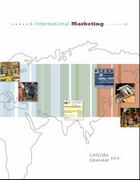Question
Carter makes unique fancy boots. It sells its boots in London, where the yearly demand for the boots is described by the straight-line equation P=600-Q/4.
Carter makes unique fancy boots. It sells its boots in London, where the yearly demand for the boots is described by the straight-line equation P=600-Q/4. It has a factory in London, with yearly production costs given by c(Q) = 50,000 + 100Q. Note that Q is given in terms of pairs of boots. Thus, producing 4 pairs of boots costs 50,400. There are no other costs.
Question 13
What is Carter's fixed cost?
Question 14
What is Carter's marginal cost?
Question 15
Carter exhibits
a. Economies of scale
b. Diseconomies of scale
c. Constant economies of scale
d. Economies of scale followed by diseconomies of scale
Question 16
What is Carter's profit-maximizing price?
Question 17
What is Carter's profit-maximizing (yearly) quantity?
Question 18
What are Carter's (yearly) profits?
Carter has just opened a branch in Manchester, where the (yearly) demand curve is given by P=400-Q/5. Carter produces boots that it sells in Manchester in its London factory, shipping them to Manchester at a cost of 2 per pair of boots. In addition, there are fixed costs of 10,000 associated with the Manchester branch. The Carter management knows about price discrimination and will charge different prices in London and Manchester.
Question 19
What price should Carter charge in London?
Question 20
What price should Carter charge in Manchester?
Question 21
What are Carter's total profits now?
Carter has hired a new manager, who has not taken any economics. The manager argues that it does not make sense for Carter to sell boots in Manchester for less money than it gets for the boots in London. Accordingly, Carter increases the Manchester price to the same level as the London price.
Question 22
What are Carter's (yearly) profits now?
PDQ has the beach-side concession for selling ice cream in Tyrico Bay, Trinidad. It can make two types of ice cream, which it labels Deluxe and Super Deluxe. It costs PDQ 2.00 to make a serving of Deluxe ice cream and 2.50 to make a serving of Super Deluxe.
Each day, PDQ has n potential customers, where n is a number that varies randomly from day to day, depending mainly on the weather. PDQ has determined that there are two types of customers, ice cream fanatics and regular customers. Although the number of customers varies, on any given day 50% of them are fanatics and 50% are regular. The customers have the following valuations, or willingness to pay, for the two types of ice cream:
Deluxe Super Deluxe
Fanatics 5.50. 8.00
Regular 4.00. 4.50
Note that Fanatics are willing to pay 8.00-5.50=2.50 to upgrade from Deluxe to Super Deluxe, while Regulars are willing to pay 4.50-4.00=0.50 to upgrade from Deluxe to Super Deluxe.
(Assume that if customers are indifferent between buying and not buying, they buy; if they are indifferent between buying a Deluxe and a Super Deluxe, they buy the Super Deluxe.)
Question 23
Suppose PDQ sells only Deluxe ice cream. How much should it charge?
Question 24
Suppose PDQ sells only Super Deluxe ice cream. How much should it charge?
Question 25
If PDQ sells both Deluxe ice cream and Super Deluxe ice cream, how much should it charge for Deluxe ice cream?
Question 26
If PDQ sells both Deluxe ice cream and Super Deluxe ice cream, how much should it charge for Super Deluxe ice cream?
Question 27
What should PDQ do?
a. Sell only Deluxe ice cream
b. Sell only Super Deluxe ice cream
c. Sell both Deluxe and Super Deluxe ice cream
Question 28
When Michelin lowers the price of its premium tire by 1%, demand rises by 3%. This means that Michelin's elasticity of demand is _ _ _ _ and the demand for Michelin's tires is _ _ _ _ _:
a. (1/3), elastic.
b. (1/3), inelastic.
c. 3, elastic.
d. 3, inelastic.
Question 29
A monopolist is charging a price of 50 for its product, and selling 10,000 units. We can conclude that
a. The firm's marginal cost is 50.
b. The firm's marginal cost is greater than 50.
c. The firm's marginal cost is less than 50.
d. All of the above are possible.
(Make the standard assumption that production is infinitely divisible and there are no capacity constraints.)
Question 30
Chiropractors and physical therapists can both treat back injuries, but only physical therapists can treat ankle injuries. Suppose that the hourly rate for chiropractic treatment isPC, regardless of the specific treatment, and the hourly rate for physical therapy isPT, regardless of the specific treatment. Suppose ankle injuries become more common. At the same time, the per treatment cost of delivering chiropractic services falls (per hour room rates, insurance, etc...). What is the effect on the market for chiropractic treatment?
a. The price and quantity both increase.
b. The price and quantity both decrease.
c. The price increases, the effect on quantity is ambiguous.
d. The quantity increases, the effect on price is ambiguous.
Step by Step Solution
There are 3 Steps involved in it
Step: 1

Get Instant Access to Expert-Tailored Solutions
See step-by-step solutions with expert insights and AI powered tools for academic success
Step: 2

Step: 3

Ace Your Homework with AI
Get the answers you need in no time with our AI-driven, step-by-step assistance
Get Started


